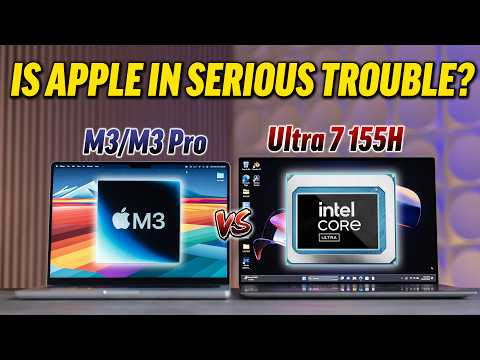Here are the top 10 features of the Intel AI PC that make it stand out from the crowd.
1. Integrated Neural Processing Unit (NPU): This is a dedicated chip that can accelerate AI workloads on your PC without relying on the cloud or external devices. The NPU can run complex AI models locally, giving you faster performance, better quality, and more privacy. The NPU is part of the Intel Core Ultra processors, code-named Meteor Lake, which will be available in December 2023.
2. AI Software Development Kit (SDK): This is a set of tools and libraries that make it easy for developers to create and optimize AI applications for the Intel AI PC. The SDK includes support for popular frameworks like TensorFlow, PyTorch, and ONNX, as well as Intel-specific optimizations and features like DLBoost and Gaussian Neural Accelerator.
3. AI Accelerated Software: This is a growing collection of software applications that leverage the power of the Intel AI PC to offer new capabilities and experiences. For example, you can use Adobe Photoshop Elements to automatically remove unwanted objects from your photos, or use CyberLink PowerDirector to generate video summaries or music videos from your clips. You can also use Microsoft Teams to blur your background, filter out noise, adjust your eye contact, and frame yourself automatically during video calls.
4. AI Content Creation: This is one of the most exciting features of the Intel AI PC, as it allows you to generate original content using AI models. For example, you can use OpenAI Codex to write code, ChatGPT to write text, or Jukebox to create music. You can also use StyleGAN to create realistic images of faces, animals, landscapes, or anything else you can imagine.
5. AI Gaming Performance: This is another feature that gamers will love, as it enables the Intel AI PC to boost your gaming performance and quality using AI techniques. For example, you can use NVIDIA DLSS to upscale your graphics resolution and frame rate, or use Intel Game Enhancer to optimize your game settings and performance. You can also use AI to enhance your gaming experience with features like voice control, face tracking, gesture recognition, and more.
6. AI Security Improvements: This is a feature that everyone can appreciate, as it helps protect your Intel AI PC from threats and attacks using AI methods. For example, you can use Windows Hello to unlock your PC with your face or fingerprint, or use McAfee Total Protection to detect and block malware using AI algorithms. You can also use AI to encrypt your data, monitor your network activity, and prevent identity theft.
7. AI Media Streaming Quality: This is a feature that improves your media streaming quality and experience using AI techniques. For example, you can use Netflix Enhancer to upscale your video resolution and quality using AI models, or use Spotify Enhancer to personalize your music recommendations and playlists using AI algorithms. You can also use AI to improve your audio quality, reduce buffering, and adapt to your network conditions.
8. AI Live Video Collaboration: This is a feature that enhances your live video collaboration with others using AI methods. For example, you can use Zoom Enhancer to transcribe your meetings, translate your speech, generate summaries and action items, and share your screen using AI models. You can also use AI to improve your video quality, reduce background noise, adjust your lighting, and add filters or effects.
9. AI Personalization: This is a feature that tailors your Intel AI PC to your preferences and needs using AI techniques. For example, you can use Cortana Enhancer to control your PC with your voice, get reminders, schedule tasks, and get answers using AI models. You can also use AI to customize your desktop, optimize your battery life, manage your notifications, and learn from your behavior.
10. AI Everywhere: This is the ultimate feature of the Intel AI PC, as it enables you to connect and interact with other devices and services that use AI technologies. For example, you can use Alexa Enhancer to control your smart home devices with your voice using AI models, or use Google Photos Enhancer to backup and organize your photos using AI algorithms. You can also use AI to sync your data across devices, access cloud services, and discover new content.
These are the top 10 features of the Intel AI PC that make it a powerful and versatile device for anyone who wants to create, work, play, and learn with AI. If you are interested in getting an Intel AI PC, you can check out the
Intel AI PC Acceleration Program, which aims to rev up AI software development and adoption. You can also visit the Intel website to learn more about the Intel AI PC and its capabilities.









